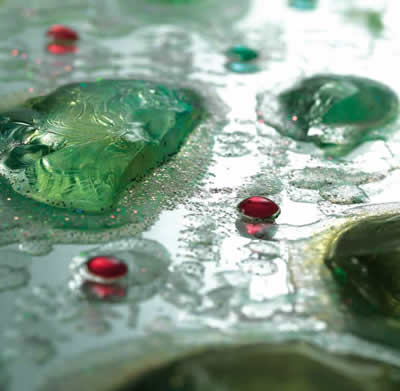Overview
Principle

Most contemporary fusing methods involve stacking, or layering thin sheets of glass, often using different colors to create patterns or simple images. The stack is then placed inside a kiln. Kiln is usually electric fired. It could also be heated by gas or wood. Glass is heated through a series of ramps (rapid heating cycles) and soaks (holding the temperature at a specific point) until the separate glass pieces begin to bond together. The longer the kiln is held at the maximum temperature the more thoroughly the stack will fuse, eventually softening and rounding glass edges of the original shape. Once the desired effect has been achieved at the maximum desired temperature, kiln temperature will be brought down to avoid devitrification. It is then allowed to anneal and cool slowly over a specified time, soaking at specified temperature ranges which are essential to the annealing process. This prevents uneven cooling and breakage and produces a strong finished product.
Annealing and cooling takes place normally for a period of few hours in 3 stages.
- The first stage - rapid cool period is meant to place the glass into the upper end of the annealing range 516℃ (960℉).
- The second stage - anneal soak at 516℃ (960℉) is meant to equalize the temperature at the core and the surface of the glass at 516℃ (960℉) relieving the stress between those areas.
- The last stage - once all areas have had time to reach a consistent temperature, is the final journey to room temperature. The kiln is slowly brought down to 371℃ (700℉), soaked for a certain period at 371℃ (700℉), down again to 260℃ (500℉) which ends the firing schedule. The glass will remain in the unopened kiln until the room temperature is reached.
Note that these temperatures are not hard and fast rules. Depending on the kiln, the size of the project, the number of layers, the desired finished look, and even the brand of glass, ramp and soak temperatures and times may vary.